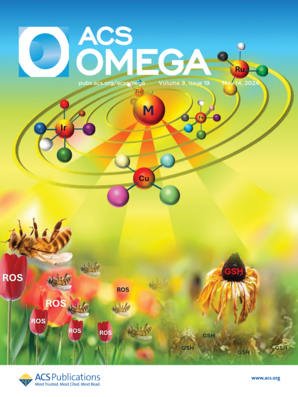Insights into the Chemical Structure and Antioxidant Activity of Lignin Extracted from Bamboo by Acidic Deep Eutectic Solvents
IF 3.7
3区 化学
Q2 CHEMISTRY, MULTIDISCIPLINARY
引用次数: 0
Abstract
Deep eutectic solvents (DESs) composed of choline chloride as hydrogen bond acceptors (HBAs) and six organic acids as hydrogen bond donors (HBDs) were used to extract lignin from bamboo (Phyllostachys edulis (Carrière) J. Houz.). The structures of the DES-extracted lignin samples were analyzed by Fourier-transform infrared spectroscopy (FT-IR), UV–visible spectroscopy (UV–vis), thermogravimetric analysis (TG), and gel permeation chromatography (GPC) to investigate the relationship between the chemical structure of lignin and its antioxidant activity. The results showed that DES treatment removed a large portion of the lignin (73.37–86.38%) from bamboo, and the chemical structure of lignin was changed due to the use of different types of HBDs. The extracted lignin exhibited good UV–vis light shielding properties, thermal stability, and antioxidant activity. Moreover, the total phenolic hydroxyl content of lignins was positively correlated with their antioxidant activity, while the molecular weight of lignins was negatively correlated with their antioxidant activity. Notably, lignin extracted with choline chloride-p-toluenesulfonic acid had the highest phenolic hydroxyl content and lower molecular weight, showing the strongest antioxidant activity (IC50 DPPH = 417.69 μg/mL, IC50 ABTS = 58.62 μg/mL). This study confirms the high thermal stability, excellent antioxidant activity, and UV shielding properties of lignin extracted with choline chloride-organic acid DESs, suggesting its potential application in the fields of antioxidants and material modifiers.

通过酸性深共晶溶剂从竹子中提取木质素的化学结构和抗氧化活性的启示
以氯化胆碱为氢键受体(HBAs),六种有机酸为氢键供体(HBDs)组成的深共晶溶剂(DESs)用于提取竹子(Phyllostachys edulis (Carrière) J. Houz.)中的木质素。通过傅立叶变换红外光谱(FT-IR)、紫外可见光谱(UV-vis)、热重分析(TG)和凝胶渗透色谱(GPC)分析了DES提取的木质素样品的结构,研究了木质素的化学结构与其抗氧化活性之间的关系。结果表明,DES处理可去除竹材中的大部分木质素(73.37%-86.38%),并且由于使用了不同类型的HBD,木质素的化学结构发生了变化。提取的木质素具有良好的紫外可见光屏蔽性能、热稳定性和抗氧化活性。此外,木质素的总酚羟含量与其抗氧化活性呈正相关,而木质素的分子量与其抗氧化活性呈负相关。值得注意的是,用氯化胆碱-对甲苯磺酸提取的木质素具有最高的酚羟基含量和较低的分子量,显示出最强的抗氧化活性(IC50 DPPH = 417.69 μg/mL,IC50 ABTS = 58.62 μg/mL)。这项研究证实了用氯化胆碱-有机酸 DESs 提取的木质素具有较高的热稳定性、优异的抗氧化活性和紫外线屏蔽性能,表明其在抗氧化剂和材料改性剂领域具有潜在的应用前景。
本文章由计算机程序翻译,如有差异,请以英文原文为准。
求助全文
约1分钟内获得全文
求助全文
来源期刊

ACS Omega
Chemical Engineering-General Chemical Engineering
CiteScore
6.60
自引率
4.90%
发文量
3945
审稿时长
2.4 months
期刊介绍:
ACS Omega is an open-access global publication for scientific articles that describe new findings in chemistry and interfacing areas of science, without any perceived evaluation of immediate impact.
 求助内容:
求助内容: 应助结果提醒方式:
应助结果提醒方式:


